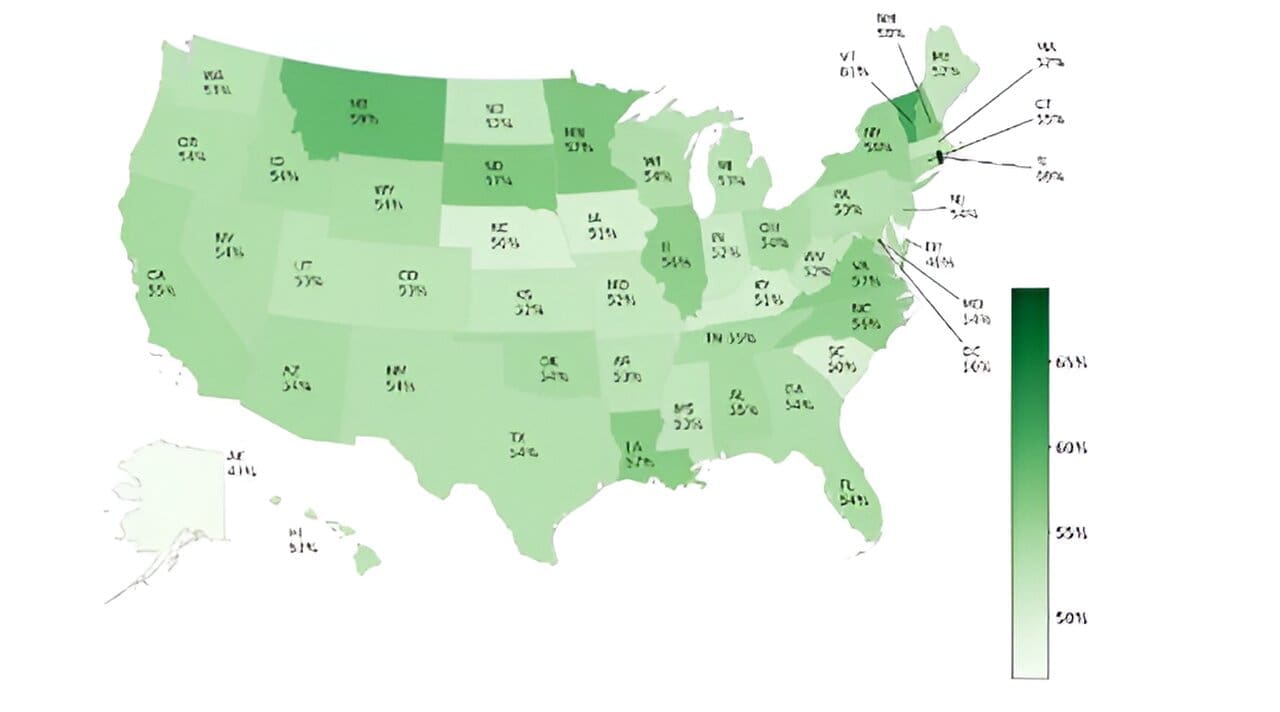The U.S. public displays more positive than negative sentiment toward nuclear energy but concerns remain about waste, cost and safety, according to an analysis of 300,000 posts on X (formerly Twitter) by University of Michigan researchers.
The study was recently published in Renewable and Sustainable Energy Reviews.
Identifying public concerns and misconceptions about nuclear energy can target efforts to bridge these gaps as nuclear energy will play a large role in goals to decarbonize by 2050, replacing oil and gas as a stable baseload electricity source.
“Understanding and addressing how the public feels about nuclear energy is essential for a just transition to clean energy,” said Majdi Radaideh, U-M assistant professor of nuclear engineering and radiological sciences and corresponding author of the study.
While surveys can gather detailed information from specific locations—such as community attitudes near a proposed nuclear facility—social media data vastly expands sample size while cutting costs and time.
Using an extensive list of keywords related to nuclear energy topics, the researchers compiled 1.26 million X posts from 2008 to 2023 and leveraged large language models, or LLMs, to annotate posts as positive, negative or neutral and summarize text.
Of the 300,000 nuclear energy posts geotagged to the U.S., neutral sentiments—those that present facts without advocating for or against the use of nuclear technology—were the most common at about 50%, followed by posts with a positive tone at 30% and a negative tone at roughly 23%. When breaking down the ratio of positive to negative posts by state, 48 of 50 states displayed more positive sentiment with the national average at 54% positive.
Technology themes fueled positive sentiment, with users citing innovations as making nuclear energy safer, more reliable and economical, noting nuclear power’s high energy density and ability to operate reliably 24/7. Positive posts also highlighted job creation and the necessity of transitioning to clean energy production.
Waste, cost and safety hazards dominated negative sentiment themes. Users expressed concern about how radioactive waste will be handled, noting that waste remains dangerous for thousands of years and creates challenges in disposal.
“These valid concerns stress that entities establishing nuclear energy systems must be transparent with local communities about safe nuclear waste storage and recycling to avoid continued public mistrust,” Radaideh said.
In addition to a deeper understanding of U.S. public opinion on nuclear energy, the study developed a method for using AI to label data with reduced bias.
Rather than relying on a single data labeling tool, the researchers used seven data labeling programs and chose the final label of positive, negative or neutral based on a majority rules approach.
“Labeling with multiple tools reduces bias as each tool struggles with certain types of texts and tones,” said Katie Vu, an undergraduate majoring in electrical engineering and computer science and co-author of the study.
The labels were scored as high confidence if five or more programs agreed and low confidence if only three or four programs agreed. Notably, LLMs trained with exclusively high-confidence posts experienced a 15% increase in model accuracy, reaching 96% accuracy.
“We finetuned our LLMs to perform well on nuclear power sentiment analysis while leveraging their exceptional understanding of language structure and semantics,” said Naman Bhargava, a master’s student of data science and co-author of the study.
For this initial analysis, the researchers selected X over social media platforms like Instagram, Facebook or LinkedIn because of its succinct, text-based format. As a next project, the research team plans to create a near real-time dashboard of nuclear sentiment aggregated from several social media platforms and news headlines.
“With nuclear energy, we have to work a bit harder because of the historical baggage that comes with it,” Radaideh said. “We are working toward scaling this methodology to real-time, open-source sentiment tracking, viewable by stakeholders like government officials, national labs and the industry that could give voice to public concerns in the coming years.”
Source: techxplore.com





